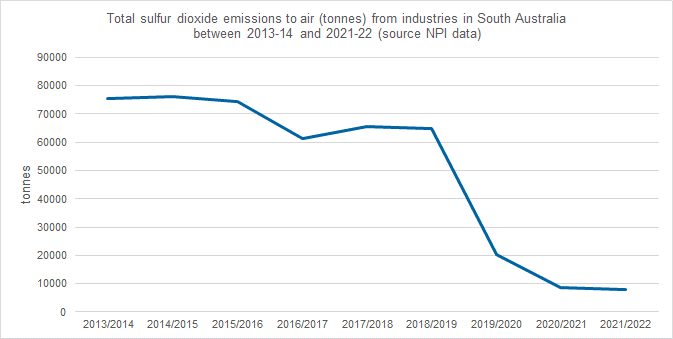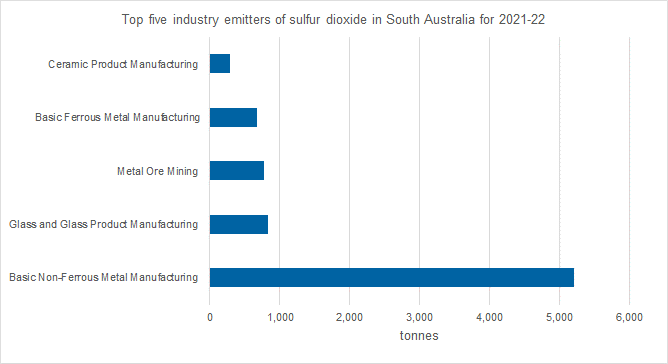- Home
- Environmental Themes
- Air
- Tracking emissions through NPI
Tracking emissions through NPI
Industries are required to report air emissions via the National Pollutant Inventory (NPI). The EPA coordinates the submission of reports for industries that emit air pollutants. This data assists the EPA with assessing risk and planning monitoring, management and regulatory actions for EPA-licensed facilities that emit air pollutants. NPI reporting does not cover the emission of greenhouse gases, which is reported through the National Greenhouse and Energy Reporting and National Greenhouse Gas Inventory. In South Australia, the NPI program is administered by the EPA.
Substance information fact sheets are provided on the NPI website that describes substance exposure pathways, common uses and sources of emissions, physical and chemical properties on various substances and substance thresholds. Data on emissions to air can be found on the NPI website.
The following section provides information on the levels of air pollutants that have been emitted from South Australian industries over the past ten years and a list of the top five sources for each pollutant based on NPI data received for the 2021–22 report. It should be noted that industry emissions reported in the NPI do not necessarily reflect ambient concentrations and community exposure to these pollutants as they do not include pollutants emitted from all sources (eg transport) and do not reflect how pollutants are released and dispersed into the airshed.
NPI data for the following list of pollutants only reflects industry emissions. Monitoring data provides a more accurate indication of community exposure to air pollutants as it reflects surrounding air quality.
Particulate Matter
Particulate matter PM10 and PM2.5 and refers to any particles that are less than 10 or 2.5 micrometres diameter respectively. Particulate matter is commonly referred to as dust, but smoke is also a source of particulate matter.
PM10 emissions
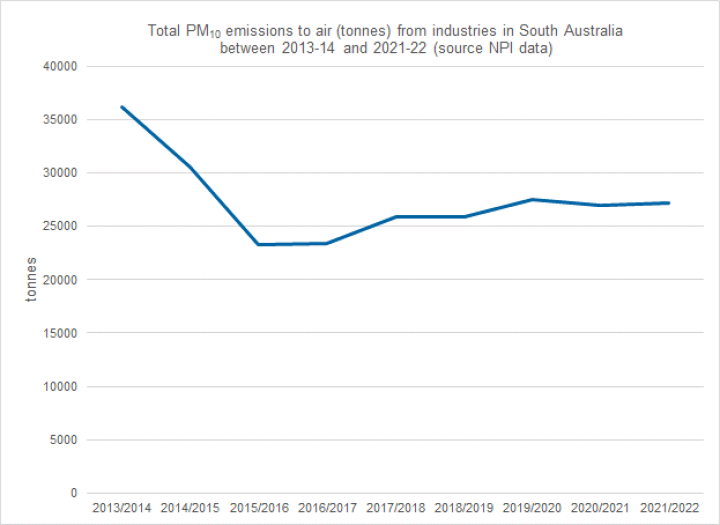
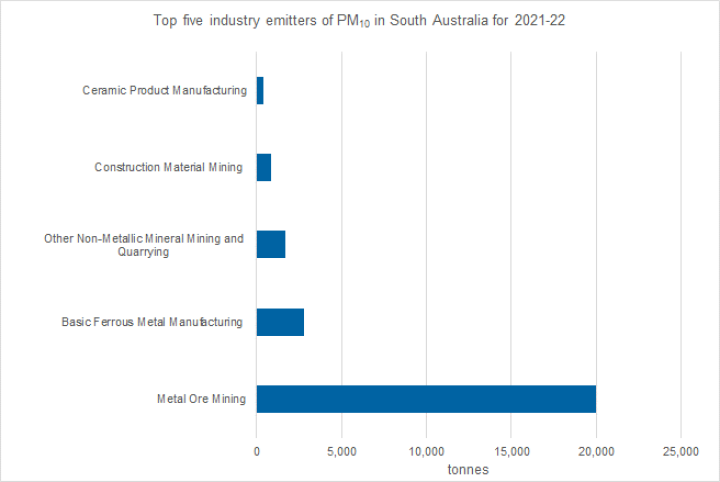
PM2.5 emissions
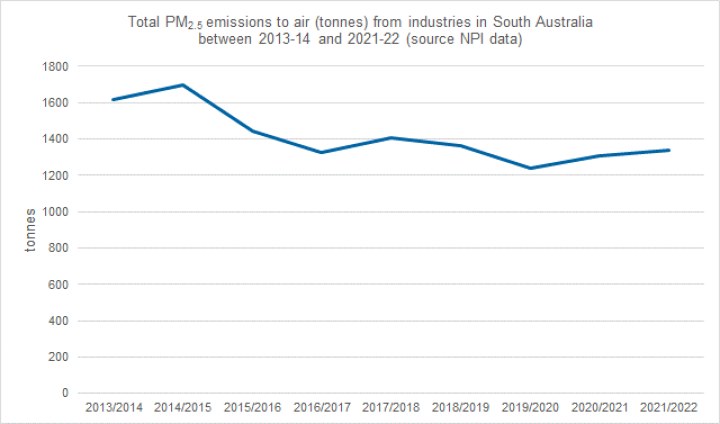
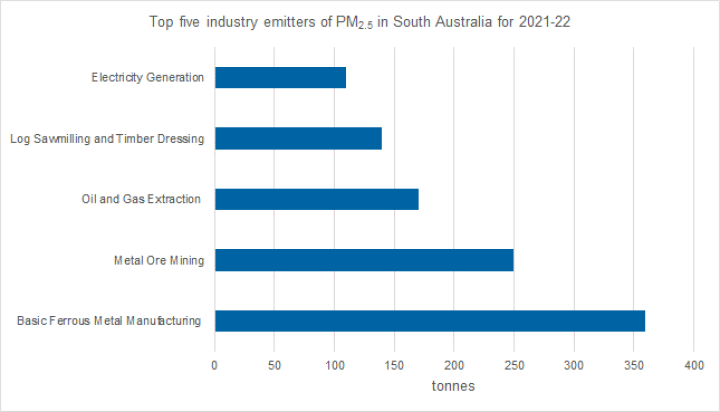
Carbon Monoxide
Burning fuels produce carbon monoxide (CO), which can reduce the amount of oxygen reaching the body’s tissues and organs. To protect human health and wellbeing, the NEPM limit for CO in the atmosphere is 9.0 ppm.
Carbon monoxide emissions from industry have increased between 2013–14 and 2021–22. Note: graphs do not include carbon monoxide emissions from vehicles and from wood burning. Data is sourced from NPI.
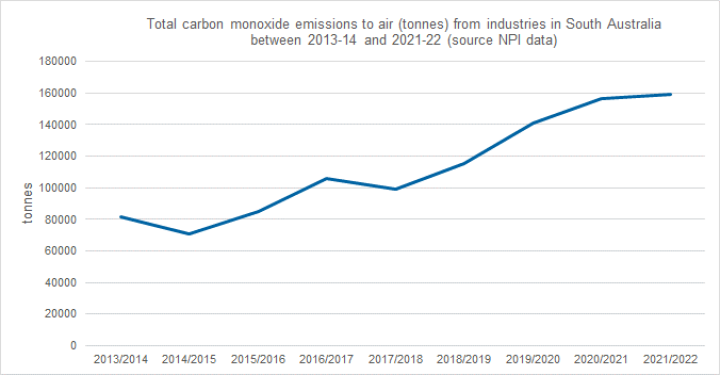
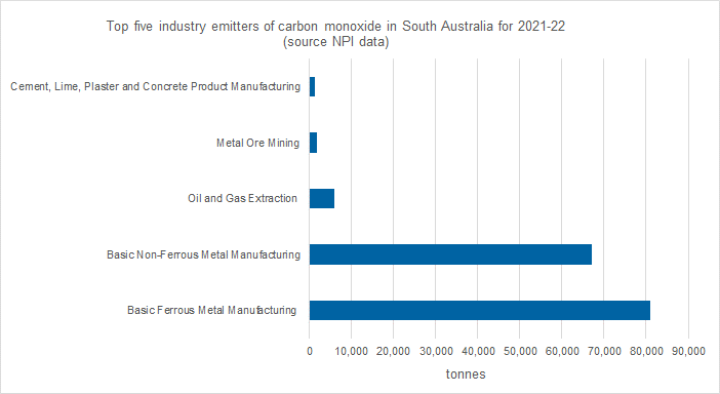
Total Volatile Organic Compounds
Total volatile organic compounds (TVOC) refer to a grouping of a wide range of chemical compounds that are produced from a wide range of sources including industry, diffuse sources such as petrol stations, biological processes, consumer products and transport (fuel storage tanks and exhaust emissions).
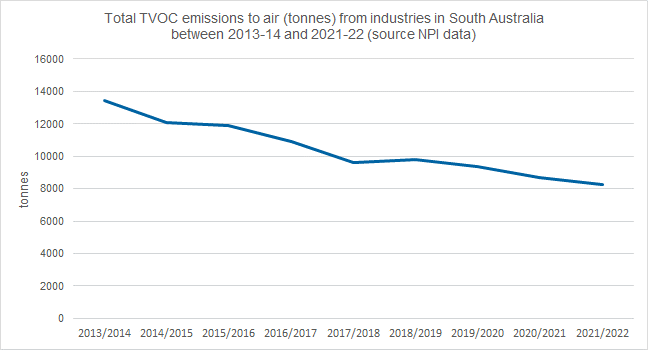
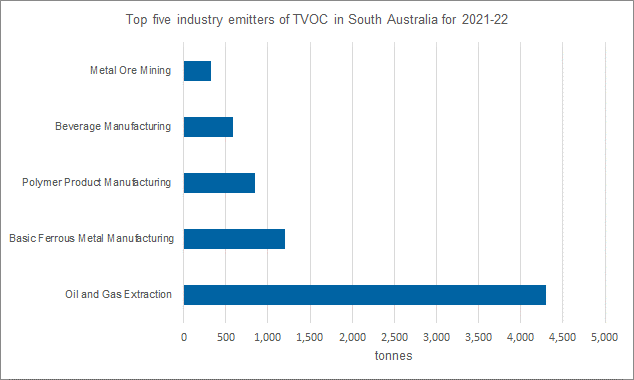
Nitrogen Oxide
Nitrogen oxides (NOx) are a mixture of gases that are composed of nitrogen and oxygen. The majority of sources are from electricity supply, mining, oil and gas extraction, manufacturing industries and petroleum manufacturing. Fuel burning activities and transport also produce NOx.

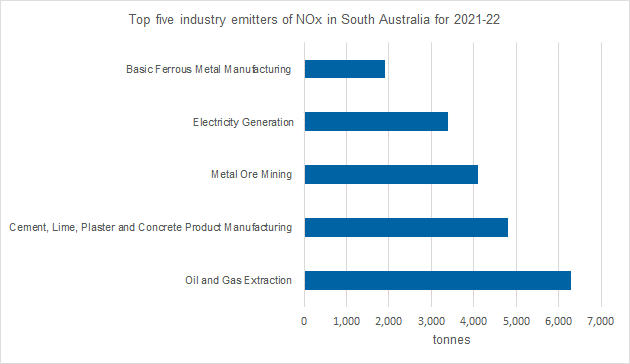
Lead
Lead is a naturally occurring heavy metal mined and used in manufacturing. Lead from emissions to air deposits onto soils and waterways and is taken up by vegetation. Lead can enter the body via ingestion and inhalation and is toxic to health, damaging the brain, nervous system and kidneys. The NEPM standard for lead is 0.5 micrograms per cubic meter (μg/m3), measured as an annual average, and allows no exceedences of this limit.
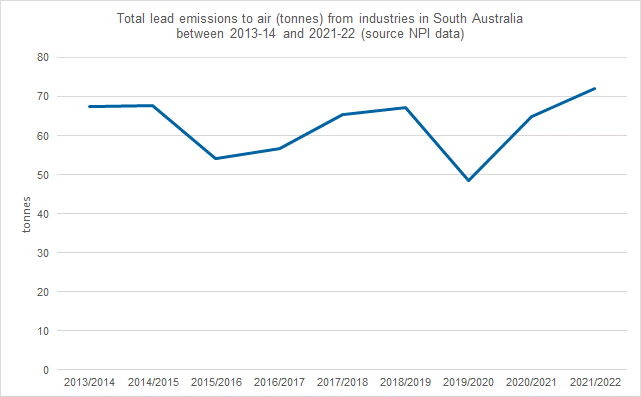
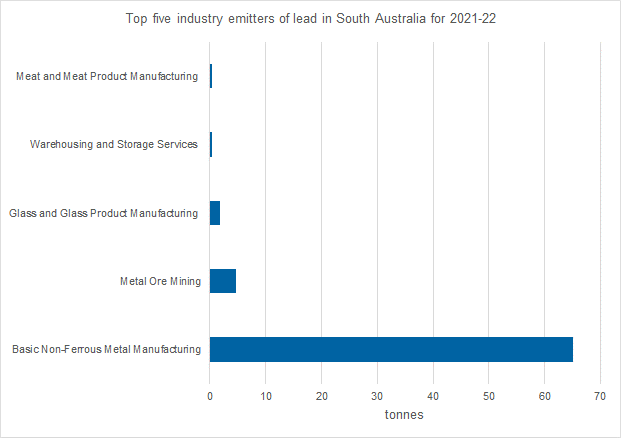
Sulfur Dioxide
Sulfur dioxide (SO2) is mainly produced from fossil fuel combustion sites, metal refining and metal smelting operations, and other industrial processes. Vehicle exhausts also produce SO2.
The majority of SO2 emitted in South Australia is from the Port Pirie smelter. The drop in these emissions represents the outcome of the new technology implemented at the smelter as part of the Port Pirie Transformation Project. This resulted in a significant reduction in SO2 emissions from the Port Pirie smelter.
